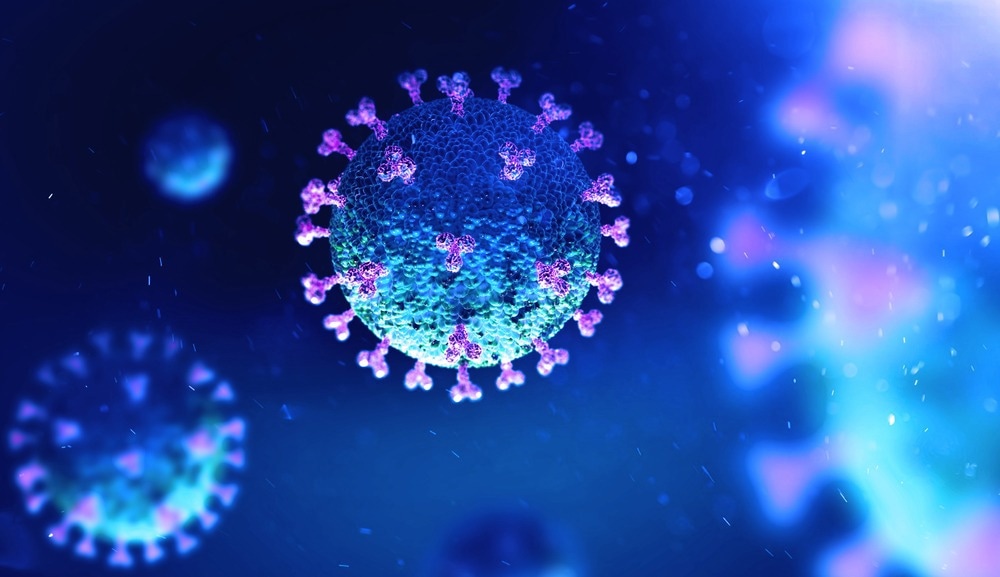In a recent study published in mSphere, researchers developed a monoclonal antibody (mAb)-based blocking enzyme-linked immunosorbent assay (bELISA) to detect severe acute respiratory syndrome coronavirus 2 (SARS-CoV-2) in animals.
 Study: Development of monoclonal antibody-based blocking ELISA for detecting SARS-CoV-2 exposure in animals. Image Credit: Andrii Vodolazhskyi/Shutterstock.com
Study: Development of monoclonal antibody-based blocking ELISA for detecting SARS-CoV-2 exposure in animals. Image Credit: Andrii Vodolazhskyi/Shutterstock.com
Background
Current SARS-CoV-2 diagnostic assays are based on host antibodies or viral nucleic acids. SARS-CoV-2 shows a broad host range; besides humans, the virus can infect various animals, such as cats, lions, tigers, deer, mink, dogs, and snow leopards. This is concerning, given the potential for transmission from humans to animals and vice versa.
This also presents challenges for developing antibody tests because the commercial availability of host-specific secondary antibody reagents is limited. In contrast to the conventional ELISA, bELISA can detect antibodies independent of host-specific secondary antibodies. Reports suggest that bELISA achieves similar sensitivity levels as conventional ELISA and has increased specificity.
The study and findings
In the present study, researchers generated a panel of anti-SARS-CoV-2 mAbs and developed a mAb-based bELISA to detect seroconversion in animals. The SARS-CoV-2 Wuhan strain nucleocapsid (N) gene was cloned and recombinantly expressed. Mice were immunized with the recombinant protein to generate specific mAbs. Four mAbs (41-10, 86-12, 127-3, and 109-33) were obtained.
The researchers additionally included a previously described mAb (B61G11). Immunofluorescent assay (IFA) revealed the ability of the five mAbs to recognize the N protein. Further, mAbs displayed varying reactivities to Vero cells infected with SARS-CoV-2 WA.1, B.1, P.1, B.167.2, or B.1.1.7. the mAbs, B61G11 and 127-3 had strong reactivity, whereas 109-33 showed weak reactivity; other mAbs had moderate reactivity.
Next, the team evaluated the cross-reactivity of mAbs with common CoVs from species susceptible to SARS-CoV-2. N proteins were expressed from two canine CoVs (CCoVs), four human CoVs (HCoVs), and two feline CoVs. IFA revealed the cross-reactivity of 86-12 with N proteins from SARS-CoV-1, HCoV-NL63, and CCoV type 1, and B61G11 with SARS-CoV-1 N. The remaining mAbs did not show cross-reactivity with N proteins from these CoVs.
Further, the authors selected the mAb, 127-3, to develop bELISA, given its strong reactivity to SARS-CoV-2 variants and inability to cross-react with common CoVs or SARS-CoV-1. They established serum standards using samples from 24 cats 14 days after SARS-CoV-2 infection; this served as the positive control. Likewise, sera from SARS-CoV-2-negative cats served as the negative control.
Positive controls were stratified into high-, medium, and low-positive standards based on optical density in indirect ELISA. The team optimized bELISA conditions using the control sera. After optimization, the percentage of inhibition (PI) of bELISA ranged from 75% to 85%, 55 to 65%, and 35% to 45% for high-, medium, and low-positive controls, respectively. bELISA PI was approximately 0% for the negative control.
Next, negative and high-positive control standards were used to estimate the analytical sensitivity. A statistical difference between positive and negative controls was evident at the highest dilution, 1:128. However, the 1:4 dilution maximized the distinction between negative and positive results while minimizing background interference and was thus selected.
The sensitivity and specificity of bELISA were evaluated using samples with a known antibody status. A bELISA PI cutoff of 17.6% yielded maximal sensitivity and specificity of 97.8% and 98.9%, respectively. The area under the receiver-operating characteristic curve was 0.998, implying high bELISA accuracy. Moreover, the authors confirmed the reproducibility of the assay using medium-positive control sera.
The team explored the dynamics of anti-N responses in cats infected with SARS-CoV-2 B.1, Delta, or Omicron. Sera were obtained at multiple time points. The assay detected anti-N response seven days-post infection (dpi) for Delta or B.1 infection and 14 dpi for Omicron infection. The highest antibody response was observed for Delta infection. Further, three dogs from a pet clinic that showed respiratory symptoms were tested using bELISA. Two dogs were positive for antibodies against SARS-CoV-2.
Conclusions
To summarize, the researchers developed a panel of anti-N protein mAbs and selected a suitable mAb (127-3) for developing bELISA. This mAb demonstrated strong reactivity to multiple SARS-CoV-2 variants without cross-reacting with N proteins from common CoVs or SARS-CoV-1, leading to high assay specificity (98.9%). The assay was also highly sensitive (97.8%), similar to commercial serologic tests, and could be helpful in COVID-19 surveillance in animal populations and identifying potential reservoirs.